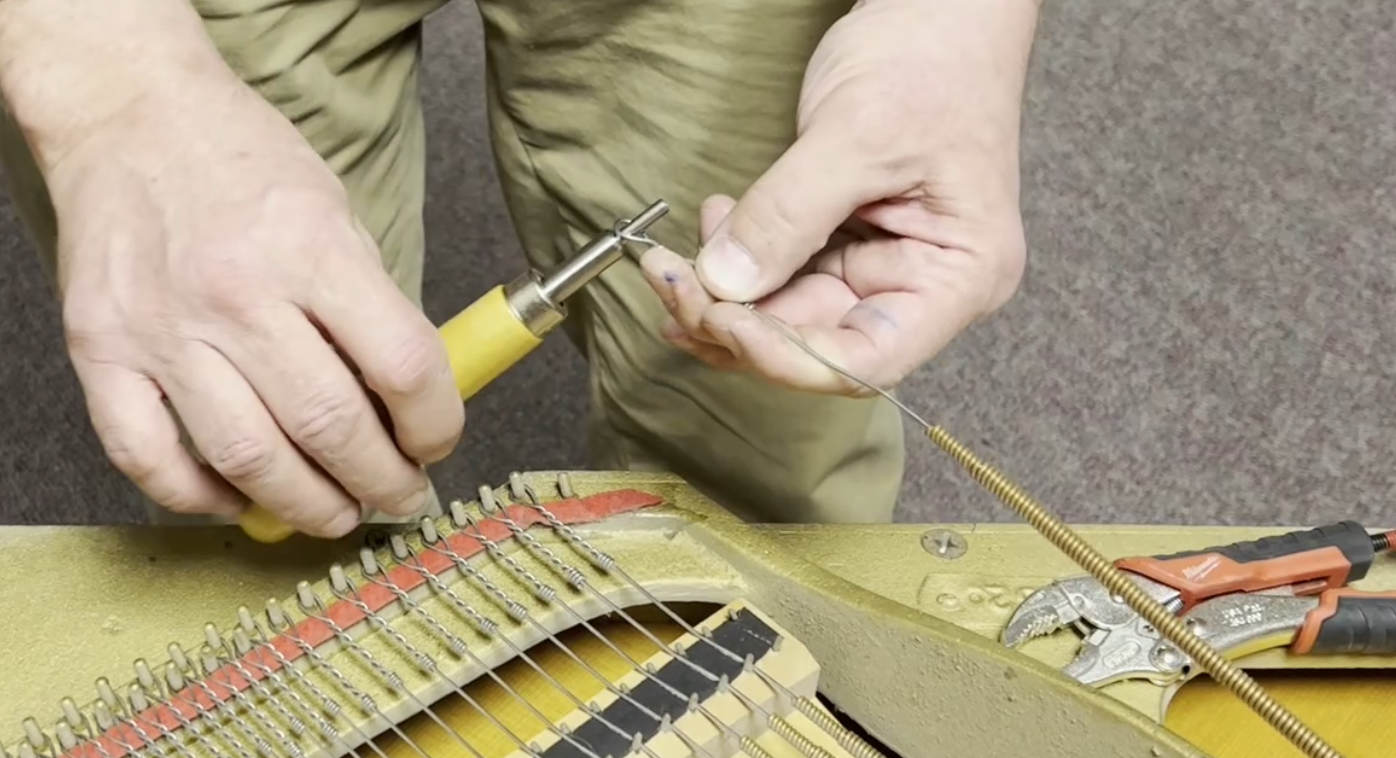Introduction
In this article, we’d like to explain a method of bringing back the tone in bass strings that have become old and don't have the ring and resonance they once had. This technique can be done on old upright pianos to improve their sound without the expense and work of replacing all the bass strings. If you’re working on an older 80 to 100 year old piano, this technique will often give you a noticeable improvement in tone, and for the work you put into it, it’s quite worth it.
Setting Up
The first step is optional: tilt the piano on its back. If you’re working on a piano for a customer, you might not have the space or time to do this step. But if you’ve got the room and the equipment, tilting the piano makes this job much more convenient. Tilt it in the same way you would if you were restringing it.

Now, the bottom board and the bottom rail need to be removed to take the bass strings off, and there are a decent amount of screws holding these parts in place. The exact location of these screws will vary depending on the make and model of your instrument, but they’re generally pretty obvious. Just make note of where each screw goes. Once we’ve got access to the bass strings, we can actually start the technique: twisting the bass strings!
The Twist!
To start twisting the bass strings, we need to loosen the tension on the string. We can do this by turning the tuning pin about 3/4 of a turn or so, just enough to remove the hitch-pin loop from the hitch-pin. Then, remove the string from the pin (a string hook makes this process much easier). When bass strings are installed, it is common practice to twist the string before putting it on the hitch-pin. Over time, that twist can become difficult to see, but some strings will want to twist back when removed from the hitch-pin, so it's important to note how much they twist back to add that to how much they're twisted.
When you twist the bass string, make sure to twist in the same direction that the copper is wound around the core string. The thicker the string, the fewer times it can be twisted before it meets resistance. So, typically, the very low bass string only gets half a twist. As the strings get less thick, you can twist them more and still feel about the same amount of resistance.

Work your way through the set of bass strings, twisting each one until you feel that resistance. Once the whole set of strings has been twisted, the piano can be tilted back up and tuned. Usually, there's a marked improvement in the tone after this process, making it well worth the time and effort.
This method can be done to old upright pianos to improve their sound without replacing all the bass strings. By spending about an hour doing this, you can make a difference and enjoy a better sounding piano.
This article is based on this video from our YouTube channel. For a visual demonstration of the concepts explained in the article, watch the video below!



